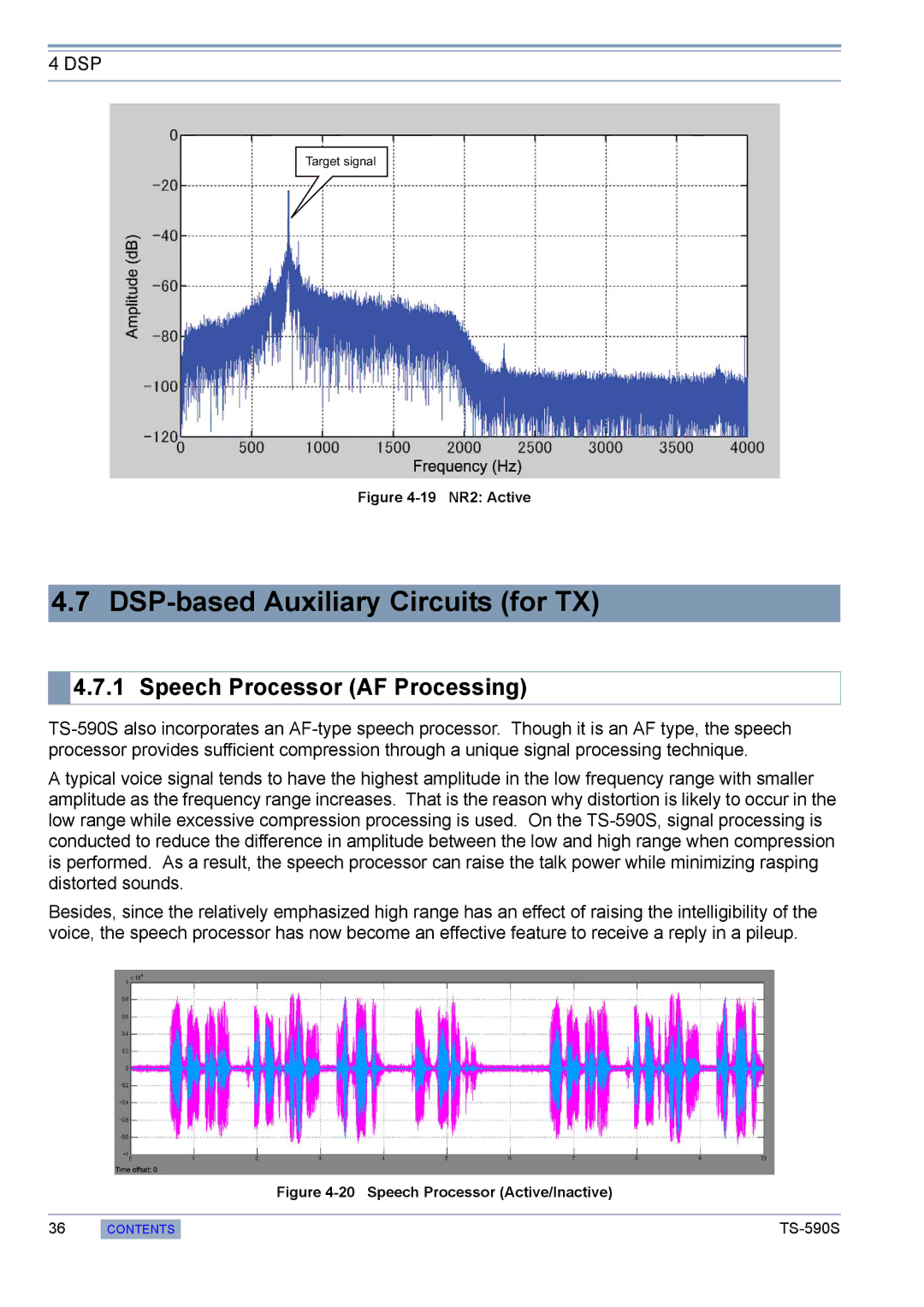
4 DSP
Target signal
Figure 4-19 NR2: Active
4.7 DSP-based Auxiliary Circuits (for TX)
 4.7.1 Speech Processor (AF Processing)
4.7.1 Speech Processor (AF Processing)
A typical voice signal tends to have the highest amplitude in the low frequency range with smaller amplitude as the frequency range increases. That is the reason why distortion is likely to occur in the low range while excessive compression processing is used. On the
Besides, since the relatively emphasized high range has an effect of raising the intelligibility of the voice, the speech processor has now become an effective feature to receive a reply in a pileup.
36
Figure 4-20 Speech Processor (Active/Inactive)
CONTENTS |
